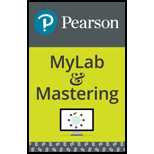
Concept explainers
Interpretation:
Among Lake Havasu and Lake Tahoe, the lake that has lower concentration of oxygen gas is to be stated.
Concept introduction:
Dissolution of gas in water is dependent upon the pressure applied on it. Higher the pressure, higher is the dissolution of gas in water. As the height increases, pressure starts decreasing. Therefore, dissolution of gas in water starts decreasing.
Answer to Problem 1CE
The Lake which has lower concentration of oxygen gas is Lake Tahoe.
Explanation of Solution
Dissolution of gas is dependent upon the elevation. Higher the elevation, lower will be the solubility of a gas in water. Lake Havasu is present at
The lake with lower concentration of oxygen gas is Lake Tahoe.
Want to see more full solutions like this?
Chapter 13 Solutions
EP INTRODUCTORY CHEM.-MOD.MASTERINGCHEM
- 87. What volume of 0.151 N NaOH is required to neutralize 24.2 mL of 0.125 N H2SO4? What volume of 0.151 N NaOH is required to neutralize 24.2 n1L of 0.125 M H2SO4?arrow_forwardWhen calcium carbonate is heated strongly, it evolves carbon dioxide gas. CaCO3(s)CaO(s)+CO2(g) 25 g of CaCO3 is heated, what mass of CO2would be produced? What volume would this quantity of CO2 (CU at STP?arrow_forwardYou want to prepare a 1.0 mol/kg solution of ethyleneglycol, C2H4(OH)2, in water. Calculate the mass of ethylene glycol you would need to mix with 950. g water.arrow_forward
- Physiological saline concentration—that is, the sodium chloride concentration in our bodies—is approximately 0.16 M . A saline solution fur contact lenses is prepared to match the physiological concentration. If you purchase 25 mL of contact lens saline solution, how many grams of sodium chloride have you bought?arrow_forwardIf 94.92 mL of a solution of HCl are equivalent to 43.76 mL of a solution of NaOH and if 49.14 mL of the latter will neutralize 0.2162 g of KHC2O4 · H2C2O4 · H2O. What volume of water should be added to a liter of the acid in order to make it 0.5050 normal?arrow_forwardTwenty grams of potassium dichromate (K2C1207) is dissolved in 150 mL of water. The solution was used in titration producing chromium(I) oxide (CrO). What is the normality of the solution in the said reaction? O 0.70N O 1.41N O 0.91N O 1.81Narrow_forward
- 1. An acid solution is prepared by dissolving 19.264 grams of pure KHC2O4.H2C2O4.2H2O in water and diluting to exactly 900 ml. Fifty milliliters (50.00 mL) of this solution are neutralized by 35.00 ml. of KOH solution. What is the normality of each solution? 2. What mass of Ca(OH)2 is present in a sample if it is titrated to its equivalence point with 44.02 mL of 0.0885 M HNO3? The balanced chemical equation is as follows: 2HNO3 + Ca(OH)2 → Ca(NO3)2 + 2H2O ; Balanced.arrow_forward5. The concentration of lead in an industrial waste stream is 0.28 ppm. What is its molar concentration?arrow_forwardDistilled water was added to 10.00 mL of 12.0 M HCl stock solution in a 2000. mL flask. What is the concentration of the diluted solution?arrow_forward
- A solution is prepared by dissolving 5.00 g of NaPH in 750.0 mL of water. Determine the molar out of this solution What volume of this solution (part a) would need to be added to water to prepare 200 mL of 0.1 M NaOH? How much water must be added to the volume of NaOH in part b?arrow_forwardAbout 6x 10°g of goldis thought to be dissolved in the oceans of the world. If the total volume of the oceans is 1.5 x 1021 L, what is the average molar concentration of gold in seawater?arrow_forwardSea water contains 3.5% NaCl, by mass. (a) If the density of seawater is 1.02 g/mL, how many grams of NaCl are present in 1.00 L of sea water? (b) What is the molarity of NaCl in seawater?arrow_forward
 Chemistry: The Molecular ScienceChemistryISBN:9781285199047Author:John W. Moore, Conrad L. StanitskiPublisher:Cengage Learning
Chemistry: The Molecular ScienceChemistryISBN:9781285199047Author:John W. Moore, Conrad L. StanitskiPublisher:Cengage Learning Principles of Modern ChemistryChemistryISBN:9781305079113Author:David W. Oxtoby, H. Pat Gillis, Laurie J. ButlerPublisher:Cengage Learning
Principles of Modern ChemistryChemistryISBN:9781305079113Author:David W. Oxtoby, H. Pat Gillis, Laurie J. ButlerPublisher:Cengage Learning Introductory Chemistry: A FoundationChemistryISBN:9781337399425Author:Steven S. Zumdahl, Donald J. DeCostePublisher:Cengage Learning
Introductory Chemistry: A FoundationChemistryISBN:9781337399425Author:Steven S. Zumdahl, Donald J. DeCostePublisher:Cengage Learning Introductory Chemistry: An Active Learning Approa...ChemistryISBN:9781305079250Author:Mark S. Cracolice, Ed PetersPublisher:Cengage Learning
Introductory Chemistry: An Active Learning Approa...ChemistryISBN:9781305079250Author:Mark S. Cracolice, Ed PetersPublisher:Cengage Learning Chemistry by OpenStax (2015-05-04)ChemistryISBN:9781938168390Author:Klaus Theopold, Richard H Langley, Paul Flowers, William R. Robinson, Mark BlaserPublisher:OpenStax
Chemistry by OpenStax (2015-05-04)ChemistryISBN:9781938168390Author:Klaus Theopold, Richard H Langley, Paul Flowers, William R. Robinson, Mark BlaserPublisher:OpenStax Chemistry: Principles and ReactionsChemistryISBN:9781305079373Author:William L. Masterton, Cecile N. HurleyPublisher:Cengage Learning
Chemistry: Principles and ReactionsChemistryISBN:9781305079373Author:William L. Masterton, Cecile N. HurleyPublisher:Cengage Learning





